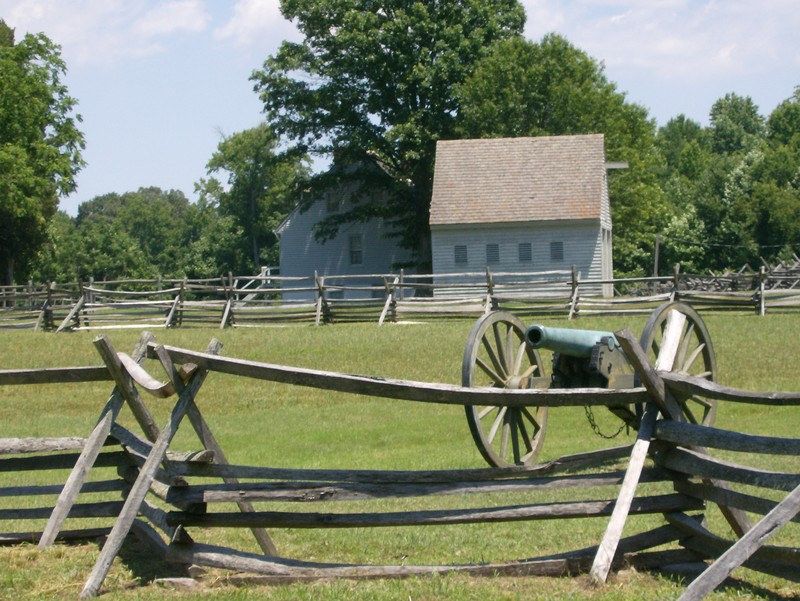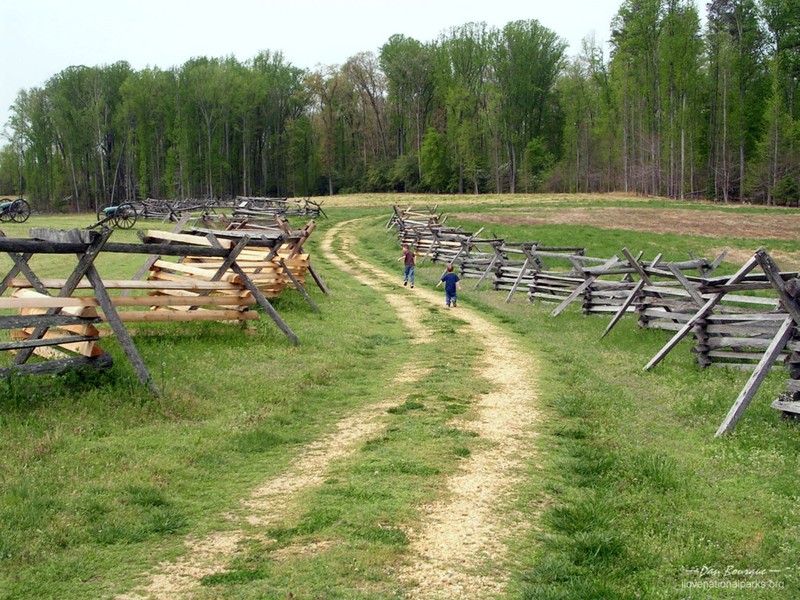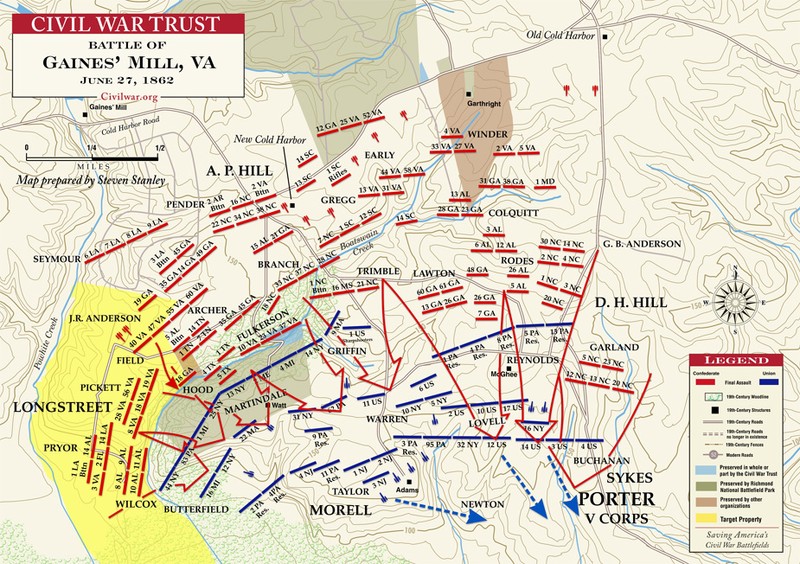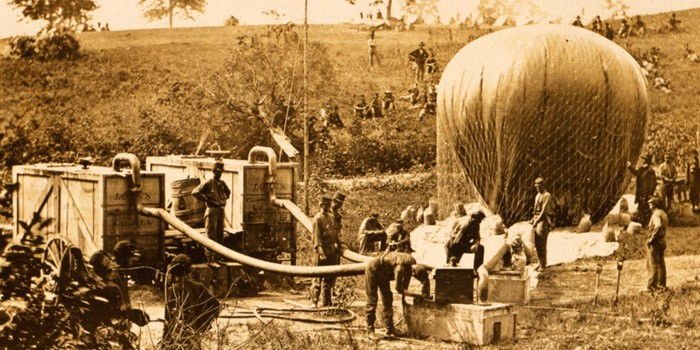Gaines' Mill Battlefield
Introduction
Text-to-speech Audio
Images
A cannon and the Watt House overlook the battlefield.

Children enjoy the walking trails that crisscross the battlefield.

The battlefield map showing the Union defensive positions and major Confederate assaults.

Troops inflate the observation balloons prior to the battle.

The ruins of Gaines' Mill taken in 1865. The mill was destroyed during the fighting in 1862

Backstory and Context
Text-to-speech Audio
Following the Battle of Seven Pines, Robert E. Lee took command of the Confederate Army in the field against Union forces as the previous commander, Joseph Johnston, was severely wounded. Gaines' Mill was Lee's first battle as the Commander of the Army of Northern Virginia.
The Battle of Gaines’ Mill (or the first Battle of Cold Harbor) was a continuation of the previous day’s Battle of Beaver Dam Creek. The Union forces hastily set up defensive works throughout the night and awaited the Confederate Army of Northern Virginia, led by General Robert E. Lee, to renew the previous day’s assault. Lee did not disappoint and the Confederate forces launched several uncoordinated attacks, led by the troops of Generals A.P. Hill and Richard Ewell. However, the Union line held throughout the afternoon as sunset approached.
Confederate General “Stonewall” Jackson and his soldiers arrived at the battlefield late, but finally joined the fray as dusk approached. This coordinated Confederate assault succeeded in breaking the Union line along the right flank and center. However, the Confederate victory was tempered as nightfall permitted the Union forces to withdraw across the Chickahominy River, destroying the bridges as they crossed.
The battle was Lee’s first major victory in the Civil War and effectively ended the Union threat to Richmond. The final Confederate attack is also thought to have been their largest of the Civil War. This battle also is the first in which both sides employed observation balloons to assist with reconnaissance.
Sources
"The Battle of Gaines' Mill." National Park Service. February 25, 2015. Accessed October 20, 2017. https://www.nps.gov/rich/learn/historyculture/gainesmillbull.htm
Walker, John. "Costly Confederate victory at Gaines' Mill." Warfare History Network. December 19, 2016. Accessed October 20, 2017. http://warfarehistorynetwork.com/daily/civil-war/costly-Confederate-victory-at-gaines-mill/
Burton, Brian. "The Battle of Gaines' Mill." Essential Civil War Curriculum. Accessed October 20, 2017. http://essentialcivilwarcurriculum.com/the-battle-of-gaines-mill.html
